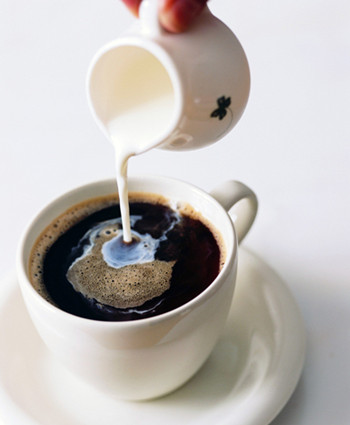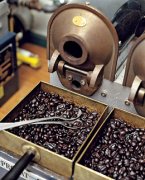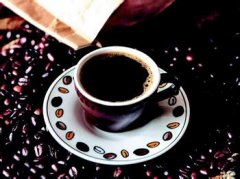It is fashionable to drink coffee in the "living room" of Viennese.

Sitting in the "living room" of Viennese drinking coffee
It is no exaggeration to say that Vienna is almost a coffee shop in ten steps. From the coffee kiosk on the street corner for people to drink standing up, the coffee shop where students gather near the university, to the magnificent coffee shop next to the theatre and the imperial city, most of them open at 06:30 in the morning and don't close until the wee hours of the morning, from waking up to falling asleep. Viennese can go out of the house and order a drink at any time. Drinking coffee has become a part of life in Vienna. In a leisurely atmosphere, people can meet friends, play chess, read books and newspapers as long as they pay for a cup of coffee. Cafes, they say, are "aplace for people who have to kill time in order not to be killed by it places to kill time not to be wasted by time".
As a tourist, the best way to learn about the lives of local people is to stay in a cafe. If you are a photographer, the cafe provides the best atmosphere and all kinds of characters. As a reminder, no matter how devoted you are to your creation, don't disturb each other, because it's not a pleasure for conservative Europeans to be stared at by the camera of strangers.
The coffee culture tradition in Vienna can be traced back to more than 300 years ago. When the Turks were defeated in the siege of Vienna, they retreated leaving some raw coffee beans that were still completely unknown in Vienna at the time, and a clever businessman bought them and opened the first coffee shop in Vienna. Today, the cafes in Vienna still strive to maintain an ancient and exquisite way of life. The shop is always clean and warm, and the waiter is still busy shuttling between the tables in black and white uniforms and neat bow ties. They never use the term "sir" to their regular customers, but affectionately call their names or titles. There is no need for the guests to say, the waiter will take them to their preferred seat and hand them their favorite newspaper.
When you order coffee in Vienna, don't casually say, "have a cup of coffee." this will overwhelm the waiter, because there are a wide variety of coffee in Vienna, from black coffee to various kinds of coffee with milk, at least dozens of varieties, all with their own names. The most popular coffee among locals is Melange, a kind of strong milk coffee. It is said that the business of cafes was not good at first, and Viennese still prefer to drink tea. Later, the store added a lot of milk to the coffee to create Melange, which worked surprisingly well and has been popular since the 1780s.
In addition to coffee, the desserts of Vienna Cafe are also famous all over the world. Viennese love sweets, and the pastry cabinets in cafes offer desserts with rich flavors and exquisite shapes. One of the most famous is the chocolate cake Sacher Torte. Sacher and Demel, two established cafes, fought for the right to name the cake for 10 years, and ended up with the victory of Sacher Cafe, enjoying the privilege of naming the cake in the conjoined form of "Sachertorte". While other cake houses and cafes can only add spaces in the middle of the words to become "Sacher Torte". The best way to taste Shah cake is to cut off a small piece with a fork and put it into your mouth, then match it with sugar-free fresh cream. Because the cake itself is somewhat hard and dry, and the cream just plays the role of lubrication, and reduces the sugar content of the cake, thus improving the overall taste. If you take another sip of slightly bitter coffee, it will be the ultimate wonderful experience.
Demel lost the case, but its store's attractive variety of cakes, chocolates, ice cream and other desserts are definitely among the best in the city. The shop is located near the Hofburg Palace and is the royal pastry house of the Habsburg royal family. At that time, the Austrian Emperor Franz Joseph I ordered his family's snacks, and the lavender candy here was also Princess Sisi's favorite. Because the Habsburg dynasty followed strict Spanish court etiquette at that time, other people could eat when the emperor began to eat, and everyone else had to stop when the emperor had finished using it. Many royal aristocrats will feel hungry after dinner and go to the Demel coffee shop outside the palace gate to buy cakes. Up to now, the words and deeds of the waiters still strictly abide by the standards of receiving royalty and aristocrats at that time. If you pay attention, you will find that they still follow the traditional, old German politeness, addressing guests in the third person.
Those who do not take pictures can not eat food photography control, in the face of the cafe exquisite cutlery, a variety of desserts and coffee, must be very excited. It is difficult for local people to understand the behavior of taking pictures of food without eating. You might as well praise the beauty and delicacy of the food enthusiastically when the clerk passes by. They must be very happy, and they may even show you housekeeping food.
What makes the Vienna Cafe special is its cultural flavor. Before coffee was widely accepted, many cafes offered a variety of newspaper reading services free of charge to attract customers. Because newspapers were so expensive at that time, even celebrities and intellectuals could hardly afford it. So they order a cup of coffee and read newspapers from various European countries to keep abreast of the latest current events. When they are tired, they chat or even debate with each other, and the whole day will not be boring. Especially from the late 19th century to the early 20th century, the Vienna Cafe was a gathering place for artists, thinkers and intellectuals. They seek inspiration and thought in an elegant, warm and humane cafe. In those days when communications were underdeveloped, some people even wrote down the address of the cafe and the public phone on their personal contact cards to ensure the most convenient contact.
Today, Viennese like to tell visitors which artists and writers are regular visitors to which cafes and which politicians like to meet journalists in which cafes. The most famous coffee shop in Vienna is the Caf é Central in the center of the city. In the late 19th century, it was an important gathering place for the intellectual class in Vienna and the cradle of many Austrian poems, plays and novels. Mozart, Beethoven, Schubert, John Strauss and his son, the painters Klimt, Schiller and Freud are all regulars here. The writer Alfred Polga even wrote the "Central Cafe Theory", the argument is: "the Central Cafe is a different coffee shop, it is a world view." And the most profound connotation of this worldview is: what is there to be considerable if you don't look at the world? " Today's Central Cafe is doing brisk business, but no matter how crowded it is, guests can stay as long as they want to order a cup of coffee. This is a century-old tradition of the Viennese Cafe.
Important Notice :
前街咖啡 FrontStreet Coffee has moved to new addredd:
FrontStreet Coffee Address: 315,Donghua East Road,GuangZhou
Tel:020 38364473
- Prev

Coffee roasting is a fastidious thing. Baking coffee is an exciting thing.
Baking coffee is an exciting thing. We call our baked coffee Auchan Coffee Company roasted coffee. However, the difference between Auchan Coffee's coffee roasting and other kinds of coffee is not only reflected in its unique color, but also in our painstaking efforts to give each coffee bean the best taste. The color baked by Auchan Coffee
- Next

What's the harm of drinking coffee on an empty stomach?
Many friends like to make coffee to satisfy their hunger on an empty stomach. The following Coffee Association experts tell you the harm of drinking coffee on an empty stomach and the crowd targeted: often pregnant women: many women start after pregnancy. Pay special attention to all the food you eat, and drinks containing caffeine are also listed as one of the taboos. This is mainly due to the slow metabolism of caffeine in pregnant women.
Related
- Beginners will see the "Coffee pull flower" guide!
- What is the difference between ice blog purified milk and ordinary milk coffee?
- Why is the Philippines the largest producer of crops in Liberia?
- For coffee extraction, should the fine powder be retained?
- How does extracted espresso fill pressed powder? How much strength does it take to press the powder?
- How to make jasmine cold extract coffee? Is the jasmine + latte good?
- Will this little toy really make the coffee taste better? How does Lily Drip affect coffee extraction?
- Will the action of slapping the filter cup also affect coffee extraction?
- What's the difference between powder-to-water ratio and powder-to-liquid ratio?
- What is the Ethiopian local species? What does it have to do with Heirloom native species?

